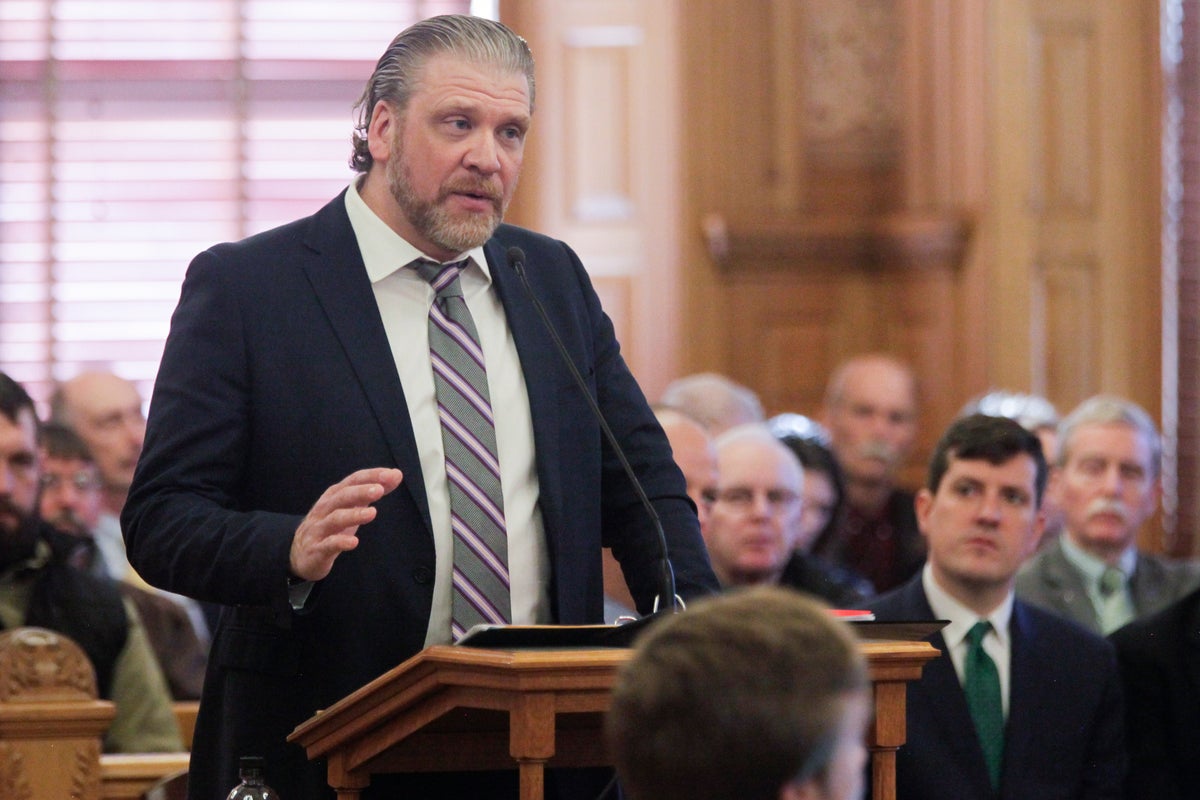
State lawmakers worried Tuesday that southern Kansas is vulnerable to oil spills from the Keystone pipeline system because earthquakes have become more frequent there, as they questioned an executive for the pipeline's operator about a massive spill in northeastern Kansas in December.
Gary Salsman, a vice president for field operations for Canada-based TC Energy, was briefing three Kansas legislative committees about the Dec. 7 rupture on the Keystone pipeline in Washington County, Kansas, about 150 miles (240 kilometers) northwest of Kansas City. It was the largest U.S. onshore spill in nearly nine years, and the company expects to spend $480 million cleaning it up, with those efforts lasting at least into the summer.
Salsman told a joint meeting of the Kansas House energy committee and its water committee that safety is TC Energy's top priority and that the company will stay in Washington County until the cleanup is complete. He later gave a similar briefing to the Senate Utilities Committee.
But several lawmakers said they are nervous about the pipeline in the Wichita area, about 160 miles (260 kilometers) south of the Washington County spill site. The area began experiencing an increase in earthquakes in 2013, after Keystone opened its Kansas pipeline segment, tied to activities associated with hydraulic fracturing, or fracking, in oil and natural gas production.
“My concern is not this spill so much as what’s lurking, moving forward, especially as you get down south,” said Republican state Rep. Leo Delperdang, of Wichita, the House energy committee chair. “We get earthquakes. What happens with the ground movement?”
During the House committees' hearing, Rep. Jerry Stogsdill, a Kansas City-area Democrat, asked Salsman whether the Keystone pipeline needed “exceptional engineering” in southern Kansas.
Salsman acknowledged that he's not an expert on the topic, but added: “When we design pipeline, we take all of those factors into consideration and I would think that, that was part of our design criteria.”
TC Energy reported last month that a faulty weld at a bend in the pipeline under the Washington County creek caused a crack that then grew over time because of the stress on the bend. The rupture dumped nearly 13,000 barrels of crude oil, each enough to fill a standard household bathtub, into the creek and on the surrounding pastureland.
Salsman told legislators that 95% of the crude oil has now been recovered.
“We've really contained this site,” he said. The company hasn’t provided details about what happens to the recovered oil.
The 2,700-mile (4,345-kilometer) Keystone system carries heavy crude oil extracted from tar sands in western Canada to the Gulf Coast and to central Illinois.
Concerns that spills could pollute waterways spurred opposition to plans by TC Energy to build another crude oil pipeline in the same system, the 1,200-mile (1,900-kilometer) Keystone XL, across Montana, South Dakota and Nebraska. President Joe Biden’s cancelation of a permit led the company to pull the plug on the project in 2021.
In Kansas, GOP lawmakers praised TC Energy for moving quickly to contain the Washington County spill and described the company as open about its activities. No one was evacuated, and state and U.S. government officials have said water from two rivers downstream were not affected. Salsman said the company has received no complaints from people tied to air quality.
A few Republicans even appeared to brush off the seriousness of the spill.
“I mean, accidents happen, and I know you're prepared for this kind of stuff,” said Senate Utilities Committee Chair Rob Olson, a Kansas City-area Republican.
Salsman said the company has diverted water from the affected creek to avoid a 4.5-mile (7.2-kilometer) section so that crews can dig out soil contaminated by the crude oil. The company estimates that it has an average of 800 people on site in any given 24-hour period.
“Our focus is on — entirely on — the remediation of the site and the safety of those people working on the site,” Salsman said.
Bill Pannbacker, a Washington County farmer and rancher, believes he might not be able to use part of his pasture for several years. The rupture occurred about 20 feet from his property line, and he said the crack initially sprayed oil droplets perhaps 200 yards up a hill before becoming a wider “gusher” that soaked about two acres.
Democrats were sometimes pointed with their questions. Data from the U.S. Department of Transportation's pipeline safety arm showed that the Washington County spill was the largest on the Keystone system since it began operating in 2010 and larger than 22 previous spills combined, according to a U.S. Government Accountability Office report to Congress in July 2021.
The report said: “The severity of spills has worsened in recent years.”
Kansas City-area state Rep. Lindsay Vaughn, the top Democrat on the House Water Committee, asked Salsman why spills on the TC Energy pipeline are getting worse. Salsman didn't answer the question directly, saying that the company has done full cleanups and taken corrective action following all previous incidents.
“We are going to get to the bottom of this,” he said.
Vaughn said later that she wasn't satisfied with the answer, and Zack Pistora, a lobbyist in Kansas for the Sierra Club, said people still don't have any reasonable assurances that another oil spill won't happen.
“I appreciate the pleasantries," he said, "but there are still some hard questions that didn't get answered.”







